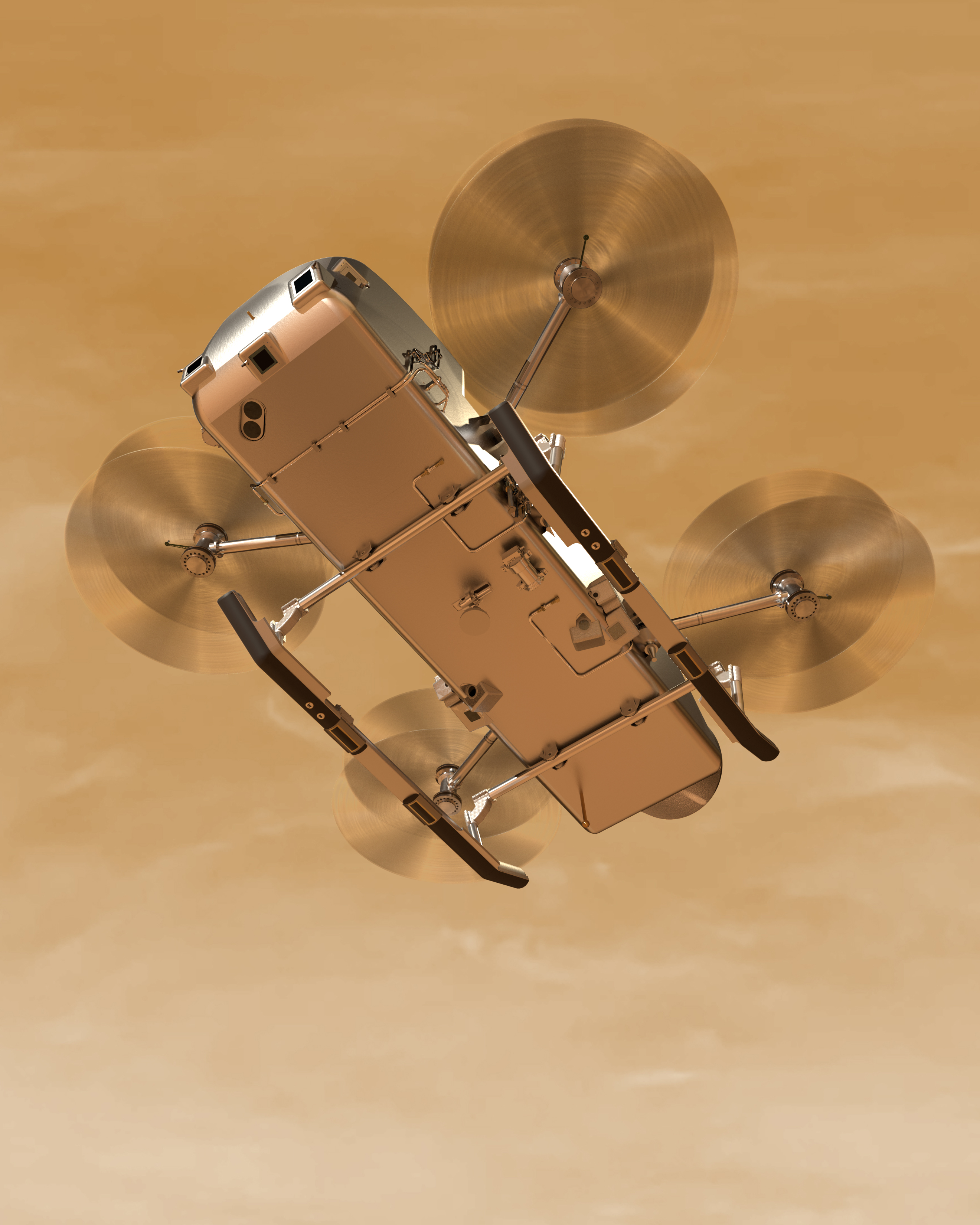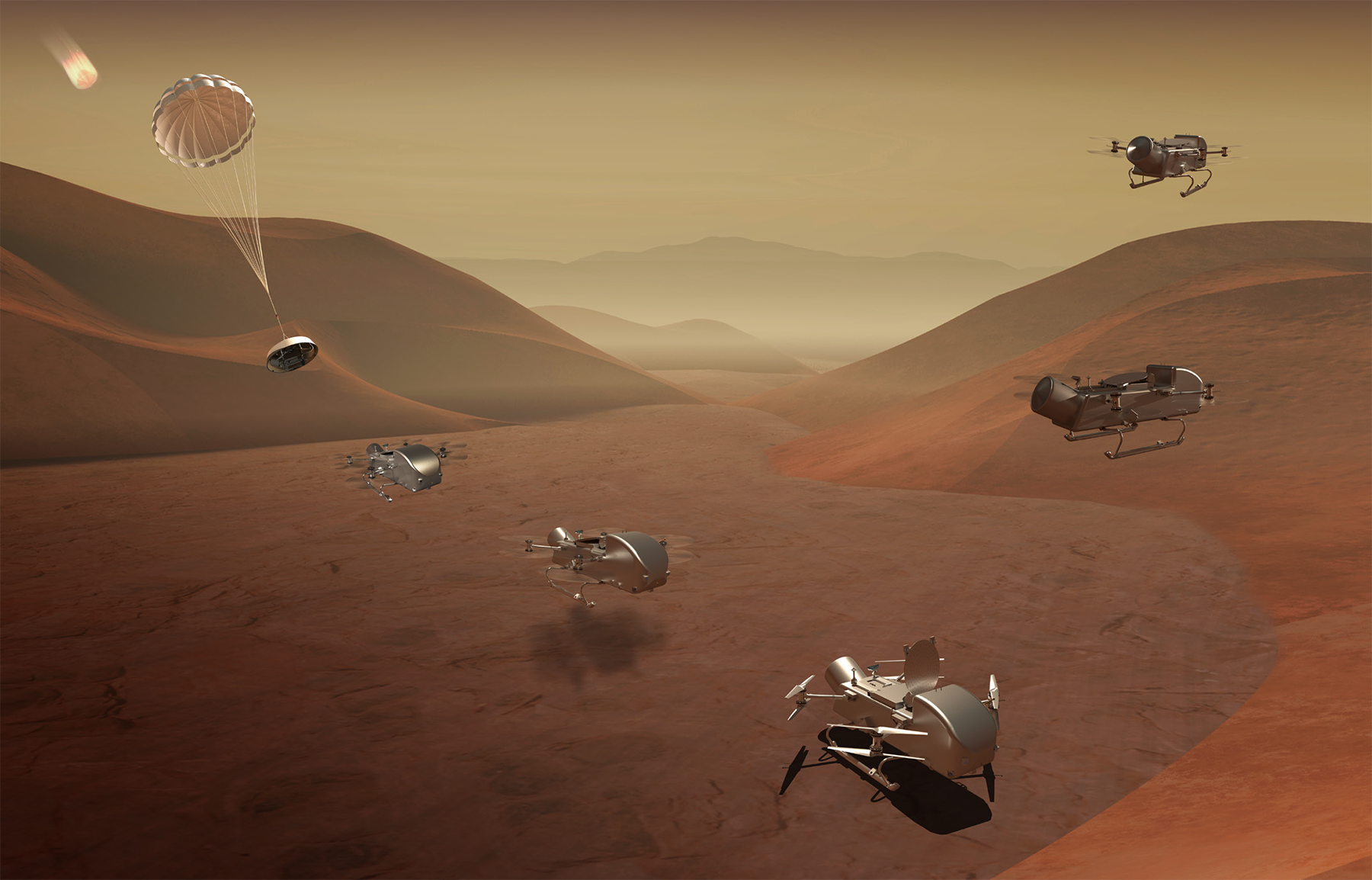Flying to Sites of Interest Across Titan
Making multiple flights, the Dragonfly dual-quadcopter will explore a variety of locations on Titan. The dense, calm atmosphere and low gravity make flying an ideal way to travel to different areas of the moon – studies from the late-1990s onward identified aerial mobility, such as that provided by helicopters, balloons, and airplanes, as a key enabler for Titan exploration. In under an hour, Dragonfly will cover tens of miles or kilometers, farther than any planetary rover has traveled. With one hop per full Titan day (16 Earth days), the rotorcraft will travel from its initial landing site to cover areas several hundred kilometers away during the planned two-year mission. Despite its unique ability to fly, Dragonfly would spend most of its time on Titan's surface making science measurements.
Unable to use solar power under Titan's hazy atmosphere, Dragonfly will use a Multi-Mission Radioisotope Thermoelectric Generator (MMRTG), like the durable Curiosity rover on Mars. Flight, data transmission, and most science operations will be planned during Titan's daytime hours (eight Earth days), giving the rotorcraft plenty of time during the Titan night to recharge.

Image Credit: Johns Hopkins APL

Image Credit: Johns Hopkins APL
Dragonfly's Surface and Atmospheric Science Measurements...
- Sample surface material and measure with a mass spectrometer to identify the chemical components and processes producing biologically relevant compounds
- Measure bulk elemental surface composition with a neutron-activated gamma-ray spectrometer
- Monitor atmospheric and surface conditions, including diurnal and spatial variations, with meteorology sensors
- Use imaging to characterize geologic features
- Perform seismic studies to detect subsurface activity and structure
...and In-flight Measurements
- Contribute to atmospheric profiles
- Provide aerial images of surface geology
- Give context for surface measurements and scouting of sites of interest



